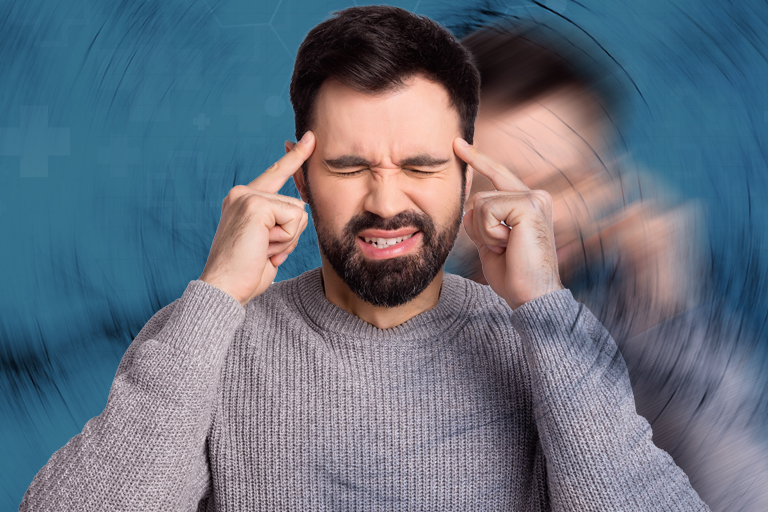Vertigo and dizziness are debilitating symptoms that can disrupt daily life, leaving you feeling off balance and disoriented. Many people suffering from these conditions often feel overwhelmed, not knowing how to alleviate their symptoms. While medication and lifestyle changes can help, how exercises help to treat vertigo is crucial in managing and treating vertigo and dizziness effectively.
Dr. Rohit Gupta, recognized as the best doctor for vertigo treatment in Faridabad, emphasizes the importance of vestibular rehabilitation exercises as part of a comprehensive treatment plan. These exercises help to improve balance, reduce dizziness, and restore normal function in patients experiencing vertigo.
What Causes Vertigo and Dizziness?
Before discussing how exercises help, it’s essential to understand the common causes of vertigo and dizziness. Vertigo is often triggered by issues in the inner ear, which controls balance. Common causes include:
- Benign Paroxysmal Positional Vertigo (BPPV): A condition where small calcium particles move within the inner ear, leading to vertigo.
- Meniere’s Disease: A disorder that affects the inner ear, causing vertigo, hearing loss, and ringing in the ears.
- Vestibular Neuritis: Inflammation of the vestibular nerve that causes dizziness and balance issues.
In some cases, vertigo and dizziness can also result from head injuries, migraines, or neurological conditions. Regardless of the cause, specialized exercises can make a significant difference in managing these symptoms.
How Exercises Help to Treat Vertigo and Dizziness
When it comes to treating vertigo, exercises fall under a category known as vestibular rehabilitation therapy (VRT). These exercises are designed to improve the brain’s ability to process balance signals from the inner ear, reducing dizziness and improving coordination.
Here are some key ways exercises help in managing vertigo:
1. Improving Balance and Coordination
One of the primary goals of vestibular rehabilitation exercises is to improve balance and coordination. Vertigo can make you feel unstable, leading to difficulties in walking or standing. Specific exercises focus on retraining the brain to respond better to balance cues, reducing dizziness and improving overall balance.
Exercises like standing on one foot, walking in a straight line, or balancing on a wobble board help strengthen the muscles responsible for maintaining balance. Over time, these exercises can significantly reduce the frequency and intensity of vertigo attacks.
2. Habituation Exercises
Habituation exercises are particularly useful for patients who experience vertigo triggered by certain head or body movements. In these exercises, the patient is gradually exposed to movements that typically cause dizziness. Over time, the brain becomes accustomed to these movements, and the symptoms of vertigo decrease.
For example, if moving your head quickly from side to side triggers dizziness, a habituation exercise might involve repeatedly performing that movement in a controlled environment. This helps the brain adapt, reducing the sensation of vertigo over time.
3. Canalith Repositioning Maneuvers (Epley Maneuver)
For those suffering from Benign Paroxysmal Positional Vertigo (BPPV), exercises like the Epley Maneuver can be highly effective. BPPV occurs when small calcium particles in the inner ear move out of position, causing dizziness. The Epley Maneuver involves a series of head and body movements designed to move these particles back into their proper place.
Dr. Rohit Gupta, a specialist in treating vertigo in Faridabad, frequently recommends this maneuver to his BPPV patients. By repositioning the calcium particles, patients often experience significant relief from vertigo.
4. Gaze Stabilization Exercises
Patients with vertigo often struggle with focusing their vision, particularly when their head is moving. Gaze stabilization exercises help retrain the brain to improve visual focus and reduce dizziness. These exercises involve focusing on a stationary object while moving the head from side to side or up and down. Over time, this helps reduce the sensation of dizziness and improves visual clarity.
5. Strengthening the Vestibular System
The vestibular system, located in the inner ear, is responsible for maintaining balance. Exercises that stimulate and strengthen this system can help alleviate vertigo. Activities like head movements, walking while turning the head, or focusing on visual targets while moving are designed to enhance the function of the vestibular system.
Why Consult a Specialist?
While vestibular rehabilitation exercises can significantly improve symptoms of vertigo and dizziness, it’s essential to consult a specialist to ensure you’re performing the right exercises. Dr. Rohit Gupta, the best doctor for vertigo treatment in Faridabad, offers expert guidance and personalized treatment plans based on each patient’s unique condition.
Dr. Rohit Gupta conducts a thorough evaluation to identify the underlying cause of vertigo and recommends the most effective exercises and treatments tailored to each individual.
Conclusion
Exercises are a powerful tool in treating vertigo and dizziness. Through vestibular rehabilitation therapy, patients can improve balance, reduce dizziness, and regain control of their lives. Under the expert care of Dr. Rohit Gupta, patients in Faridabad have found relief from vertigo, enabling them to live more comfortably and confidently.

